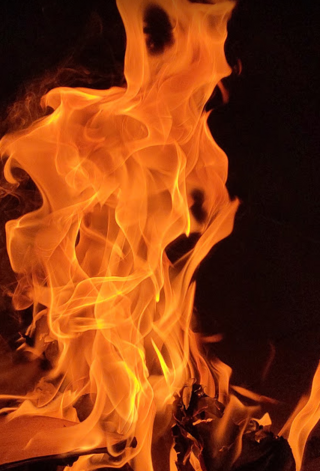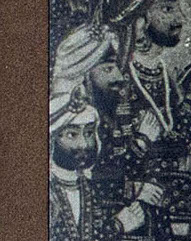
Lahore is the capital and largest city of the Pakistani province of Punjab. It is the second largest city in Pakistan, after Karachi, and 26th largest in the world, with a population of over 13 million. Located in central-eastern Punjab, along the River Ravi, it is the largest Punjabi-speaking city in the world. Lahore is one of Pakistan's major industrial, educational and economic hubs. It has been the historic capital and cultural centre of the wider Punjab region, and is one of Pakistan's most socially liberal, progressive, and cosmopolitan cities.

Ranjit Singh was the founder and first maharaja of the Sikh Empire, ruling from 1801 until his death in 1839. He ruled the northwest Indian subcontinent in the early half of the 19th century. He survived smallpox in infancy but lost sight in his left eye. He fought his first battle alongside his father at age 10.

Vaisakhi, also known as Baisakhi, marks the first day of the month of Vaisakh and is traditionally celebrated annually on 13 April and sometimes 14 April. It is seen as a spring harvest celebration primarily in Punjab and Northern India. Whilst it is culturally significant as a festival of harvest, in many parts of India, Vaisakhi is also the date for the Indian Solar New Year.

Lohri is a popular winter Dogra and Punjabi folk festival celebrated primarily in Northern India. The significance and legends about the Lohri festival are many and these link the festival to the Duggar region and Punjab region. It is believed by many that the festival marks the passing of the winter solstice. Lohri marks the end of winter, and is a traditional welcome of longer days and the sun's journey to the Northern Hemisphere. It is observed the night before Maghi.

The Sikh Empire was a regional power based in the Punjab region of the Indian subcontinent. It existed from 1799, when Maharaja Ranjit Singh captured Lahore, to 1849, when it was defeated and conquered by the British East India Company in the Second Anglo-Sikh War. It was forged on the foundations of the Khalsa from a collection of autonomous misls. At its peak in the 19th century, the empire extended from Gilgit and Tibet in the north to the deserts of Sindh in the south and from the Khyber Pass in the west to the Sutlej in the east as far as Oudh. It was divided into four provinces: Lahore, which became the Sikh capital; Multan; Peshawar; and Kashmir from 1799 to 1849. Religiously diverse, with an estimated population of 4.5 million in 1831, it was the last major region of the Indian subcontinent to be annexed by the British Empire.

Vasant Panchami, also rendered Vasanta Panchami and Saraswati Puja in honour of the Hindu goddess Saraswati, is a festival that marks the preparation for the arrival of spring. The festival is celebrated in Indian religions in different ways depending on the region. Vasant Panchami also marks the start of preparation for Holika and Holi, which take place forty days later. The Vasant Utsava (festival) on Panchami is celebrated forty days before spring, because any season's transition period is 40 days, and after that, the season comes into full bloom.

Haqiqat Rai Bakhmal Puri was an 18th-century martyr from Sialkot, who was executed in Lahore during the time of Zakariya Khan.

Maharaja Gulab Singh Jamwal (1792–1857) was the founder of Dogra dynasty and the first Maharaja of the princely state of Jammu and Kashmir, which was a part of Sikh Empire became the largest princely state under the British Raj, which was created after the defeat of the Sikh Empire in the First Anglo-Sikh War. During the war, Gulab Singh would later side with the British and end up becoming the Prime Minister of Sikh Empire. The Treaty of Amritsar (1846) formalised the transfer of all the lands in Kashmir that were ceded to them by the Sikhs by the Treaty of Lahore.

Shah Hussain, also known as Madhoo Lal Hussain, was a 16th-century Punjabi Sufi poet who is regarded as a pioneer of the Kafi form of Punjabi poetry. He lived during the ruling periods of Mughal emperors Akbar and his son Jahangir.

Mela Chiraghan or Mela Shalimar is a three-day annual festival to mark the urs of the Punjabi poet and Sufi saint Shah Hussain who lived in Lahore in the 16th century.

Kharak Singh was the second maharaja of the Sikh Empire, ruling from June 1839 until his dethronement and imprisonment in October 1839. He was the eldest son of Maharaja Ranjit Singh, founder of the Sikh Empire and his consort, Maharani Datar Kaur. Kharak was succeeded by his only son Nau Nihal Singh.

The culture of Lahore refers to the cultural traditions and customs from Lahore, which form a central part of the Punjabi culture, and is a manifestation of the lifestyle, history, festivals, literature, music, language, politics, cuisine and socio-economic conditions of its people.
Lahore, being the richest cultural city in Pakistan, celebrates a number of festivals throughout the year. It is known for the festivals of Basant and Mela Chiraghan, but many others are celebrated in the metropolis as well.
Punjabi festivals are various festive celebrations observed by Punjabis in Pakistan, India and the jairish alipreet Punjabi found in Kannada. The Punjabis are a diverse group of people from different religious background that affects the festivals they observe. According to a 2007 estimate, the total population of Punjabi Muslims is about 90 million, with 97% of Punjabis who live in Pakistan following Islam, in contrast to the remaining 30 million Punjabi Sikhs and Punjabi Hindus who predominantly live in India.

Kunwar Pashaura Singh (1821 – 11 September 1845), also spelt Peshawara Singh, sometimes styled as Shahzada, was the younger son of Maharaja Ranjit Singh and Rani Daya Kaur.

Vasanta, also referred to as Basant, refers to the Indian spring.

The Jammu division is a revenue and administrative division of the Indian-administered Jammu and Kashmir in the disputed Kashmir region. It is bordered by the Kashmir division to the north. It consists of the districts of Jammu, Doda, Kathua, Ramban, Reasi, Kishtwar, Poonch, Rajouri, Udhampur and Samba. Most of the land is hilly or mountainous, including the Pir Panjal Range which separates it from the Kashmir Valley and part of the Great Himalayas in the eastern districts of Doda and Kishtwar. Its principal river is the Chenab.
Punjabis are the majority ethnic group in Pakistan. They celebrate a number of religious and cultural festivals:


























